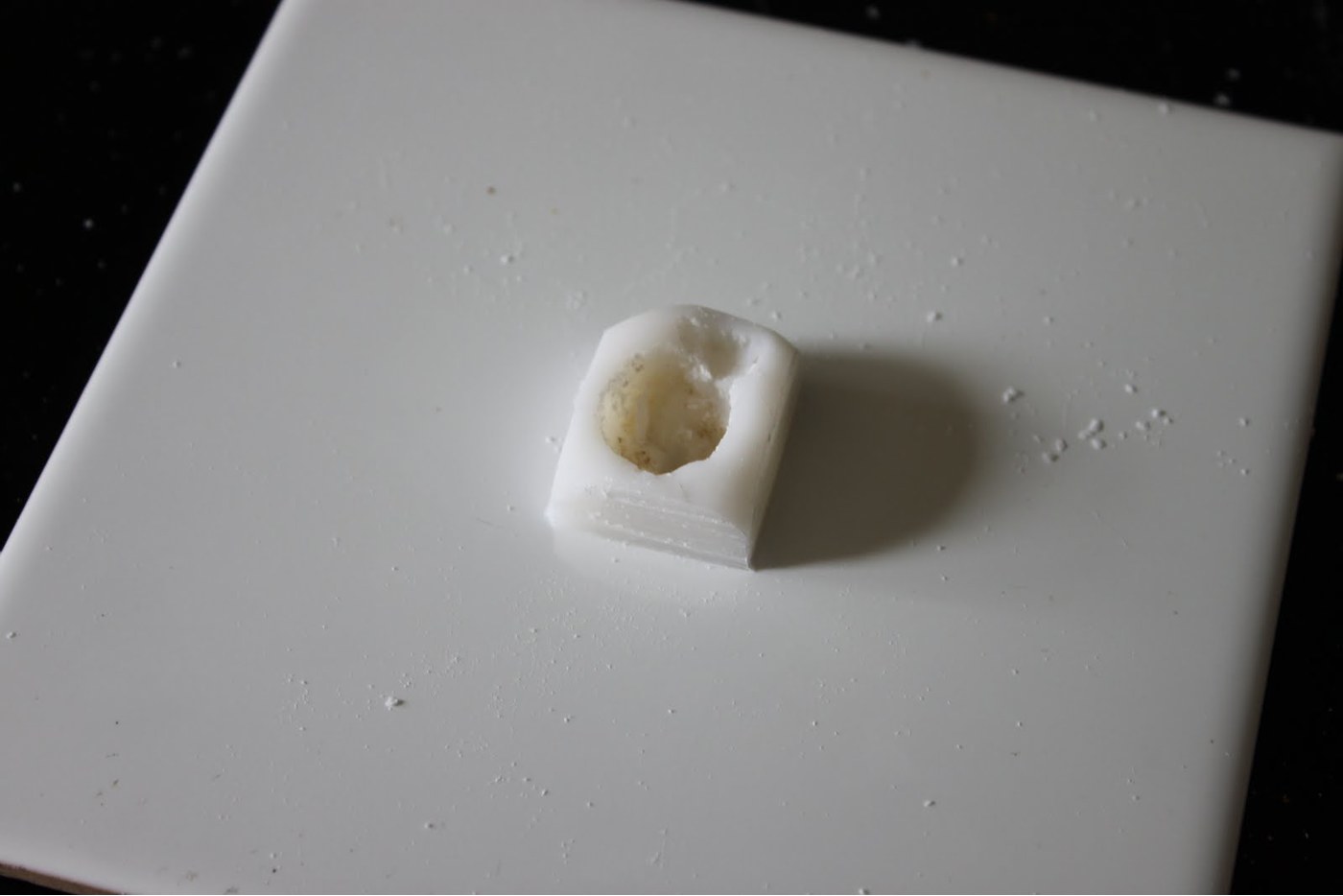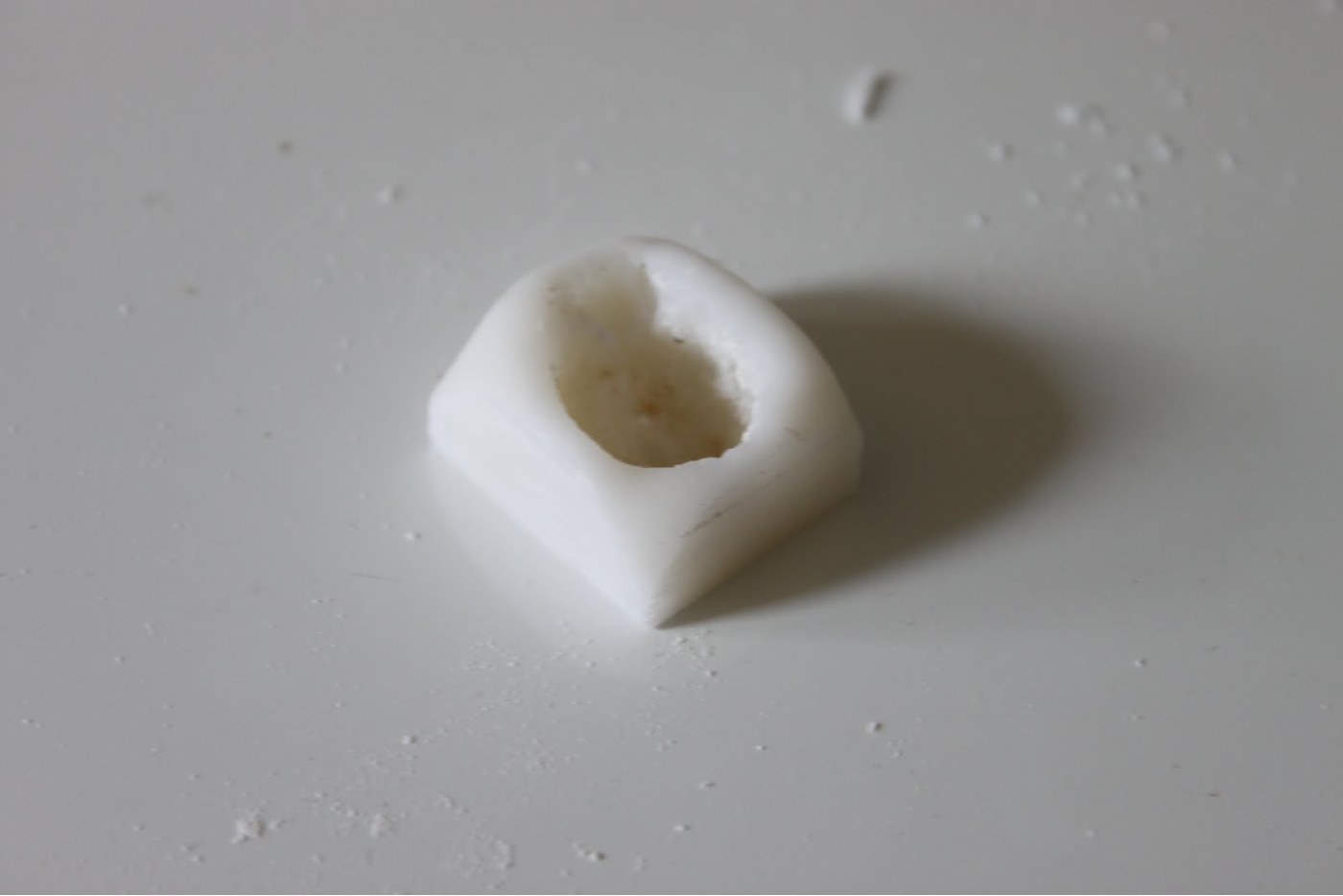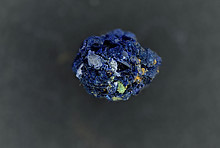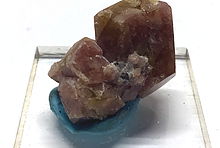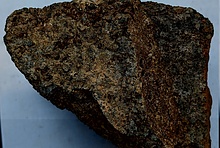Creating mineral bases using Fimo Clay
Last Updated: 26th Apr 2011By Jolyon Ralph
Creating mineral bases using Fimo Clay
Some minerals are difficult to display without a custom base. There are many people providing custom bases, but for those on a limited budget (or who enjoy being creative), you can make your own using Fimo modelling clay).
Fimo clay is simple to work with, inexpensive and can be fired in a domestic oven for 30 minutes at a relatively low temperature. Crucially it does not shrink when heated, so you can create a base, fire it, and it will be a perfect fit for your specimen.
So.. Here is my first attempt at making a base. It took me a total time of about 45 minutes.
1. Break off a piece of the clay. I'm using a glazed bathroom tile to work the clay on - this is ideal because it can go straight into the oven on this tile.
2. Knead the clay to soften it.
3. Roll out the clay. Keep kneeding and rolling the clay until it is elastic.
4. Push the clay into a lump
5. Push your specimen into the lump of clay. Adjust the clay so it can properly hold the specimen, but you must be able to remove and insert the specimen again!
6. Bake the base on the tile (without your specimen!) for 30 minutes at 110 degrees Celsius (230 degrees F). When it comes out, leave it to cool for 20 minutes.
7. Test your specimen in the base - it should fit perfectly!
8. If you want a neater base, you can trim down the baked clay, it's not hard to work with. You'll need to judge how much you should leave to securely keep the specimen stable. I just used a normal kitchen knife to cut through the clay. it has a consistency more like a hard plastic than baked clay.
9. You can sand down the sides if you want it to be nicer. I could trim down the top and sand that down too, but I am uncertain how much stability would remain if I did this.
10. The finished base.
11. Testing the specimen again. It doesn't fall over, I haven't trimmed too much!
12. And into the cabinet it goes.
Now. this is my first attempt, and with more experience and more patience I think it would be possible to use less clay and make less obtrusive bases than this - but it works fine and keeps the specimen safe.
Hope you enjoyed this!
Fimo clay is available in many places, but in the UK you can buy it mail-order from EJR Beads http://www.ejrbeads.co.uk - which is run by my sister (who is somewhat of an expert on Polymer Clay having written two books about it!) You'll want the 'Fimo Classic' blocks, which are available here: http://www.ejrbeads.co.uk/shop/index.php?main_page=product_info&cPath=17_40&products_id=149 - I used the "00 Translucent" for this experiment - as you can see it's not VERY translucent, I have also got a block of white clay to try, but you can choose the colours that you feel are appropriate for your specimens.
Jolyon
Article has been viewed at least 16191 times.







